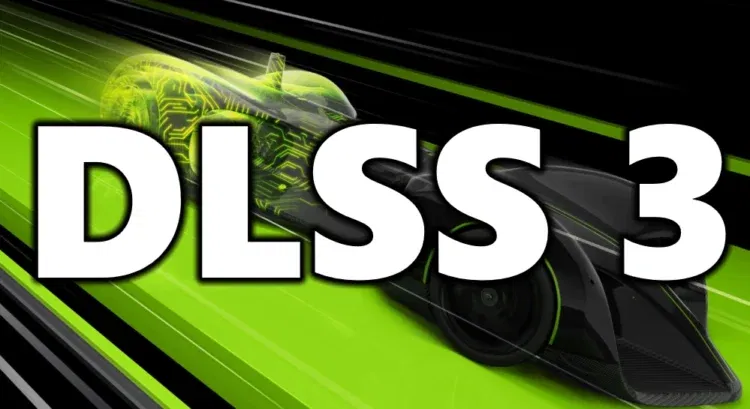RTX 2xxx and 3xxx GPUs won’t support the newest DLSS interation
Earlier today, Nvidia revealed its RTX 4090 and 4080 cards, which you can read about here. During this reveal, the company also announced DLSS 3, an expanded version of its Deep Learning Super Sampling technology, which will be released alongside the RTX 4090 and RTX 4080.
As for why I’m excited about DLSS 3, it’s a benefit to gaming. DLSS 3, according to Nvidia, “boosts game performance by up to four times over brute-force rendering.” We’ve seen the Microsoft Flight Simulator demo, and with DLSS 3 on, the game was able to hit 135 frames per second.
This is impressive, especially since we can’t even do that on current GPUs with DLSS 2 enabled. The game is a hardware-requiring beast, yet with DLSS (and RTX 4090) higher frame rates will be possible. Though, for $1500+, it damn well better be.
Of course, I had questions regarding this and what this means for existing Nvidia cards. As you already know, the RTX 2xxx and RTX 3xxx cards supported DLSS 1, and DLSS 2, as do the RTX 3xxx cards. However, when DLSS 3 is eventually released, it will be exclusive to the RTX 4xxx cards.
Sadly, it seems that Nvidia is claiming that the current generation of Nvidia cards won’t be able to support DLSS 3.0, as it is exclusive to the NVIDIA Ada Lovelace architecture, which powers GeForce RTX 40 Series graphics cards. This is directly from Nvidia, so this rules out any hope of DLSS 3 for at least the RTX 2xxx and 3xxx cards.
Now, it stinks, but at the same time, I see where Nvidia is coming from. The RTX 4xxx cards will be able to do something that the RTX 3xxx cards can’t do, and that’s the ability supplements your CPU. For CPU-limited games, DLSS 3 will allow the RTX 4xxx cards to help with the workload.
Because DLSS Frame Generation executes as a post-process on the card, it can boost frame rates even when the game is bottlenecked by the CPU. For CPU-limited games, such as those that are physics heavy or involve large worlds, DLSS 3 allows the GeForce RTX 40 Series cards to render the game at up to twice the frame rate that the CPU is able to compute the game.
To me, this sounds like a solution for those who don’t have the best available processor but do end up with an RTX 4xxx card. Assuming you have a motherboard that supports PCIe 4. The card will pick up the workload and help the processor. Instead of playing a game and seeing it chugging along, the RTX 4xxx will pick up the slack.
Nvidia has also stated that DLSS 3 will make its way into the following games, as DLSS 3 is built upon DLSS 2. Meaning developers can quickly implement DLSS 3 in their games.
Here’s the list of games that will have DLSS 3 incorporated before they’re released or will see a DLSS 3.0 update.
- A Plague Tale: Requiem
- Atomic Heart
- Black Myth: Wukong
- Bright Memory: Infinite
- Chernobylite
- Conqueror’s Blade
- Cyberpunk 2077
- Dakar Rally
- Deliver Us Mars
- Destroy All Humans! 2 – Reprobed
- Dying Light 2 Stay Human
- F1 22
- F.I.S.T.: Forged In Shadow Torch
- Frostbite Engine
- HITMAN 3
- Hogwarts Legacy
- ICARUS
- Jurassic World Evolution 2
- Justice
- Loopmancer
- Marauders
- Microsoft Flight Simulator
- Midnight Ghost Hunt
- Mount & Blade II: Bannerlord
- Naraka Bladepoint
- PERISH
- Portal With RTX
- Ripout
- S.T.A.L.K.E.R 2: Heart of Chornobyl
- Scathe
- Sword and Fairy 7
- SYNCED
- The Lord of the Rings: Gollum
- The Witcher 3: Wild Hunt
- THRONE AND LIBERTY
- Tower of Fantasy
- Warhammer 40,000: Darktide
Funny enough, Nvidia has Spider-Man Remastered shown in its DLSS 3 trailer, but the game isn’t listed in the list provided. Does it already support DLSS 3.0?
For those wondering about the possibility of DLSS 3-only games, I can’t see that ever being a thing. That would be silly and damaging. If anything, I’d imagine that the game would be playable and would see the older hardware and drop down or enable DLSS 2 + Reflex instead.
I’m interested in the performance that DLSS 3 and the RTX 3080 or RTX 3090 will provide. Assuming I can afford one.


